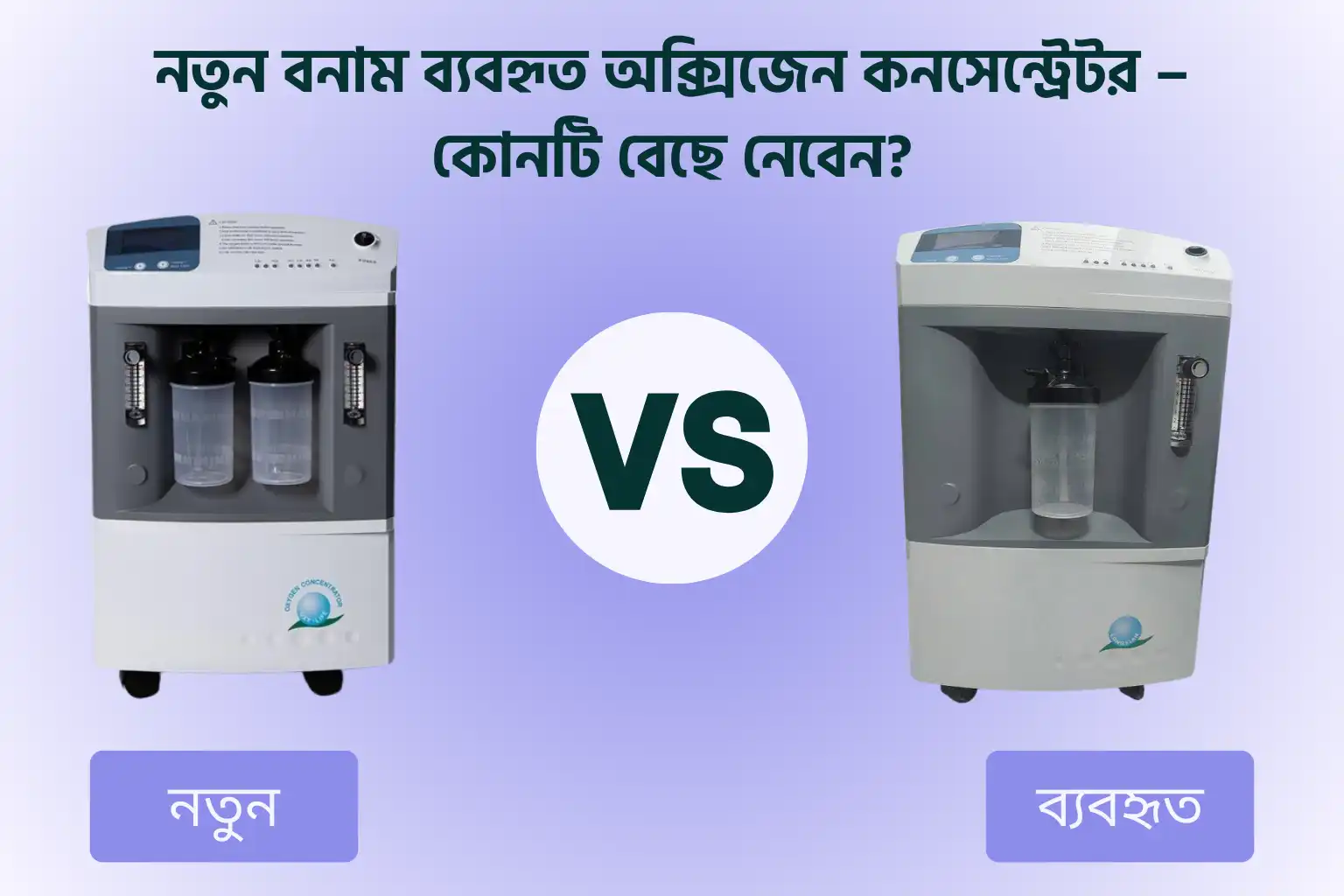In today’s world, especially with respiratory illnesses being a significant concern in Bangladesh, understanding home medical equipment is more important than ever. One such vital device is the oxygen concentrator. If you or a loved one requires oxygen therapy, you might have heard about it. But what exactly is an oxygen concentrator, and how does it magically produce medical-grade oxygen from the air we breathe? Let’s explore.
What is an Oxygen Concentrator?
An oxygen concentrator is a medical device designed to deliver concentrated oxygen to patients who require oxygen therapy due to conditions like COPD (Chronic Obstructive Pulmonary Disease), asthma, pneumonia, post-COVID complications, or other respiratory ailments. Unlike traditional oxygen cylinders or tanks which store a finite amount of compressed oxygen, a concentrator continuously draws in ambient air from the room, filters it, and delivers a steady supply of purified oxygen.
This makes it a convenient and cost-effective solution for long-term oxygen therapy (LTOT) at home, particularly in areas across Bangladesh where frequent cylinder refills might be challenging or expensive.
How Does an Oxygen Concentrator Work? The Science Simplified
The process an oxygen concentrator uses to produce oxygen is quite ingenious and relies on a technology called Pressure Swing Adsorption (PSA). Here’s a step-by-step breakdown, keeping the Bangladeshi user in mind:
- Drawing in Ambient Air:
- The machine starts by pulling in the regular air from the room. This air, as we know, is primarily composed of nitrogen (about 78%) and oxygen (about 21%), along with small amounts of other gases.
- Compression and Cooling:
- The intake air is first compressed by an internal compressor. As air is compressed, it heats up, so it’s then passed through a heat exchanger to cool it down.
- The Sieve Bed Filtration – The Core Technology:
- This is where the magic happens. The compressed and cooled air is then directed through one of two (or more) cylindrical towers called sieve beds. These sieve beds are filled with a granular material called zeolite.
- Zeolite has a unique property: it selectively adsorbs (attracts and holds) nitrogen from the air under pressure, while allowing oxygen to pass through. Think of it like a very smart filter that specifically traps nitrogen.
- Nitrogen Adsorption (Pressure Swing):
- As the compressed air passes through the first active sieve bed, the zeolite traps the nitrogen molecules.
- Oxygen, being less attracted to zeolite, passes through and is collected in a storage tank or directly supplied to the patient.
- Switching Sieve Beds (The “Swing”):
- Over time, the zeolite in the active sieve bed becomes saturated with nitrogen. Before this happens, the machine intelligently switches the airflow to the second sieve bed.
- While the second sieve bed is actively filtering nitrogen and producing oxygen, the first sieve bed undergoes a process called “desorption.” The pressure in this tower is released, causing the trapped nitrogen to be flushed out back into the room air. This “swing” in pressure between the towers is why it’s called Pressure Swing Adsorption.
- Delivering Concentrated Oxygen:
- The oxygen that passes through the active sieve bed is typically 90-95% pure (medical grade). This concentrated oxygen is then delivered to the patient through a nasal cannula or an oxygen mask at a flow rate prescribed by their doctor (e.g., 1 LPM, 3 LPM, 5 LPM, or up to 10 LPM depending on the machine’s capacity).
- Most oxygen concentrators in Bangladesh come with a flow meter, allowing users or caregivers to adjust the oxygen output according to the doctor’s prescription.
- Continuous Operation:
- This cycle of adsorbing nitrogen in one tower while purging it from the other repeats continuously, ensuring a constant and uninterrupted supply of oxygen as long as the machine has power. This is a major advantage for patients needing 24/7 oxygen support at home.
Why is this important in the Bangladesh Context?
- Reliability: For patients in both urban areas like Dhaka and more remote regions of Bangladesh, a concentrator offers a more reliable oxygen supply than relying solely on cylinder availability and refills.
- Cost-Effectiveness: For long-term users, the initial investment in an oxygen concentrator (whether buying new or a quality used oxygen concentrator) can be more economical over time compared to the recurring cost of refilling oxygen cylinders.
- Ease of Use: Modern oxygen concentrators are designed to be user-friendly, with simple controls and safety alarms, making them suitable for home care environments across Bangladesh.
- Portability: While home units are common, portable oxygen concentrators (POCs) are also available, offering more freedom for users who need to be mobile.
In Conclusion:
An oxygen concentrator is a life-sustaining device that cleverly utilizes basic principles of air composition and material science to provide essential medical oxygen. By filtering out nitrogen from the ambient air, it delivers a high concentration of oxygen directly to the patient, offering a safe, reliable, and often more convenient alternative to traditional oxygen tanks.
If you’re considering an oxygen concentrator in Bangladesh, understanding how it works can help you appreciate its value and ensure you use it effectively. At BDMEDI, we offer a range of new and certified used oxygen concentrators, along with expert advice and service support across Bangladesh, including fast home delivery in Dhaka. Always consult your doctor to determine if oxygen therapy is right for you and the appropriate flow rate needed.

